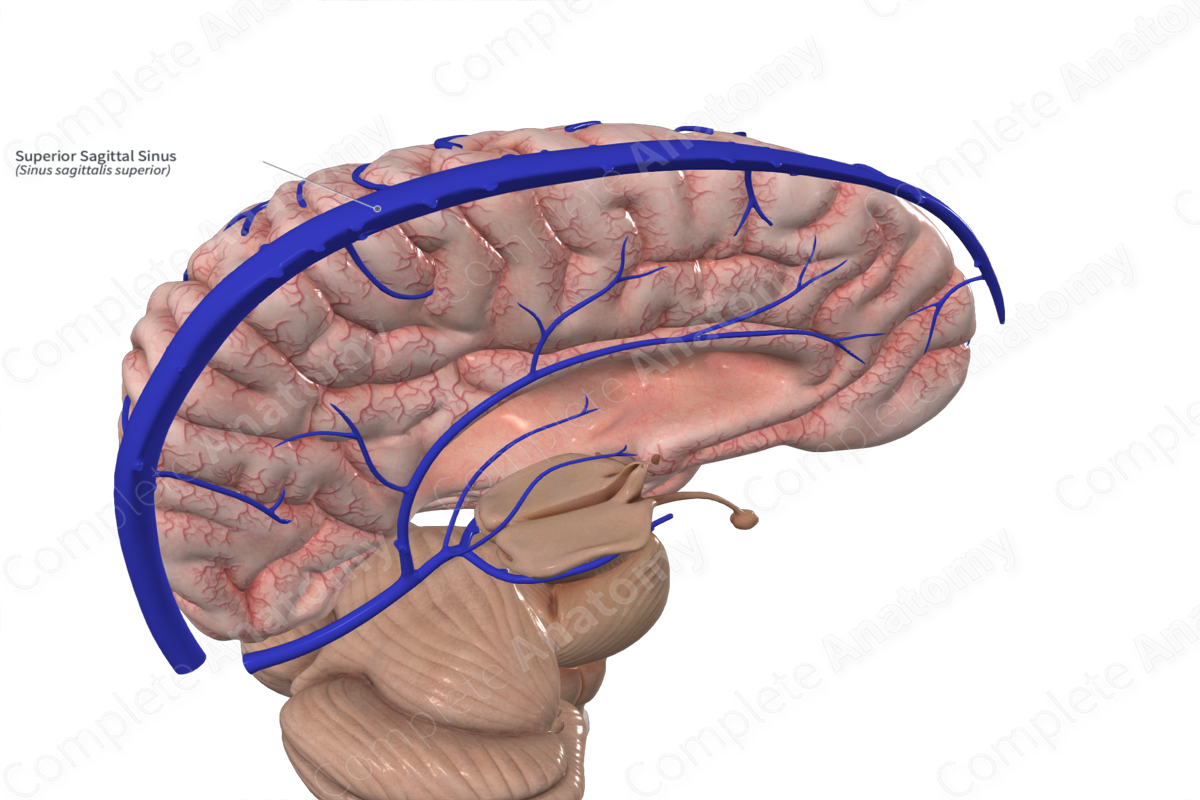
Quick Facts
Origin: Formed by union of tiny meningeal veins at the crista galli.
Course: Runs backwards within the attached upper margin of the falx cerebrum, from crista galli (anteriorly) to the confluence of sinuses (posteriorly).
Tributaries: Communications with the veins of the frontal sinus, veins of the nose (via foramen cecum), the superior cerebral veins, parietal emissary veins, and venous lacunae.
Drainage: Anterior cerebral hemispheres.
Origin
The superior sagittal sinus begins anteriorly at the crista galli, formed by the union of tiny meningeal veins.
Course
The superior sagittal sinus lies within the upper fixed convex margin of the falx cerebrum. It courses in the midline in the shallow groove on the inner table of the cranium and grows larger as it continues posteriorly. The sinus extends backwards from the crista galli to the confluence of sinuses where it usually turns to the right side to become continuous with the right transverse sinus (Pamir, Black and Fahlbusch, 2010).
Tributaries
The superior sagittal sinus communicates anteriorly at the crista galli with the veins of the frontal sinus and veins of the nose (via foramen cecum). The sinus has additional connections with the superior cerebral veins, parietal emissary veins, and venous lacunae.
Structures Drained
Lying along the sagittal groove, the superior sagittal sinus drains the lateral aspects of the anterior cerebral hemispheres into the confluence of the sinuses.
List of Clinical Correlates
- Superior sagittal sinus thrombosis
References
Pamir, M. N., Black, P. M. and Fahlbusch, R. (2010) Meningiomas E-Book: Expert Consult - Online and Print. Elsevier Health Sciences.
Learn more about this topic from other Elsevier products
Superior Sagittal Sinus

It is a deep endocranial groove marking the posterior extension of the sagittal sinus, a major blood drainage pathway from the brain.



